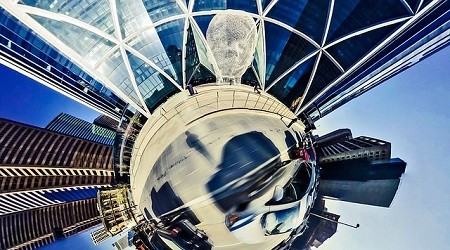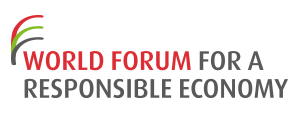Tata Communications is a leading global provider of a new world of communications. With a leadership position in emerging markets, the company leverages its advanced solutions capabilities and domain expertise across its global network to deliver managed solutions such as Telepresence to multi-national customers worldwide.
Telepresence is the next generation of traditional video conferencing. In comparison to the latter, which provided standard video and audio quality, a Telepresence experience is a fully immersive life-like, high definition meeting experience for all participants around the virtual table. A Telepresence experience is so life like that participants actually feel as if they are sitting in the same room together. Some would even say it is better than being there!
According to the National Business Travel Association, business travel spend around the world is on the rise; it is forecasted to grow 6.2% to reach US$896 billion this year, and will continue towards the US$1.2 trillion mark by 2014. Escalating travel costs and the resultant damage to the environment are factors that bear serious consideration.
Telepresence advances TATA COMMUNICATIONS’ climate change initiative
6. Clients and consumers
Instruction



Context
Objectives
1) Cut carbon footprint and costs associated with business and executive travel
2) Significantly increase employee productivity by :
- Reducing down-time spent in business travel, whilst at the same time.
- Empowering increased collaboration at all levels across the organisation
APPROACH
The combination of Tata Communications’ ownership of the world’s largest submarine network and its expertise in managed services has enabled Tata Communications to leverage Telepresence, as a must-have solution for its own use from as early as 2007. The key objective for this was to reduce travel costs and carbon footprint, while increasing productivity. As a pioneer, it was uniquely placed to service other organisations within the Tata Companies. The group was emerging from being an Indian conglomerate to the global 67.4 Bn US$ global group that it is today (Tata Motor, Jaguar Land Rover, Tata Steel etc) with environment preservation at the heart of the approach.
This expansion phase was also marked by Tata Communications’ innovation with the first publicly available Telepresence rooms being launched in April 2008. The public rooms were designed to allow any company to access the pay-per-use Telepresence facilities, located in major business hubs around the world. The public room access enabled companies to take advantage of the technology and positively contribute to the environment.
The company has since built the largest public Telepresence network, with 34 rooms worldwide, including the Lille Euratechnologies location. The initial public rooms were located within hotel groups such as the TAJ hotels and the Starwood Hotel group and expanded through relationships with regional operators in emerging markets. In recent years, public sector organisations and regional governments (City of Lille, CII etc.) have also adopted public Telepresence facilities to offer the best-of-breed collaboration solution to local enterprises.
Tata Communications also provides organisations with access to its own private room facilities located within the confines of their own offices, globally. These private rooms are seamlessly connected to the Tata Communications’ Telepresence network which is one of the broadest public and private Telepresence networks accessible today, as a result of inter-connection agreements with other leading service providers.
Meetings held using Telepresence as a complementary service to business travel has a positive impact on the environment: operating a Telepresence room for one year has the same carbon footprint as a one-way transatlantic flight, and uses the same amount of energy as the ton of jet fuel that a jumbo jet burns between boarding and take off.
CONTRIBUTION TO COMPANY PERFORMANCE
- In 2008-09, executive travel declined 27%, overall corporate travel spend declined 10% while headcount increased 8%
- In 2009-10, in which an additional three private rooms were installed, travel spend fell a further 12%, while headcount grew 30%.
- Payback for the investment in TP was 18 months.
Benefits
- On sectors where Telepresence was an option, carbon emissions from air travel were reduced by 39%, compared to only 4% on sectors where Telepresence was not available.
- During 2008-10, the company reduced its carbon footprint from air travel by 490 tons - equivalent to the carbon sequestration of about 80,000 mature pine trees over one year. Over 80% of this carbon savings was on sectors where Telepresence was provided as an option to travel.
- Country
- India
















